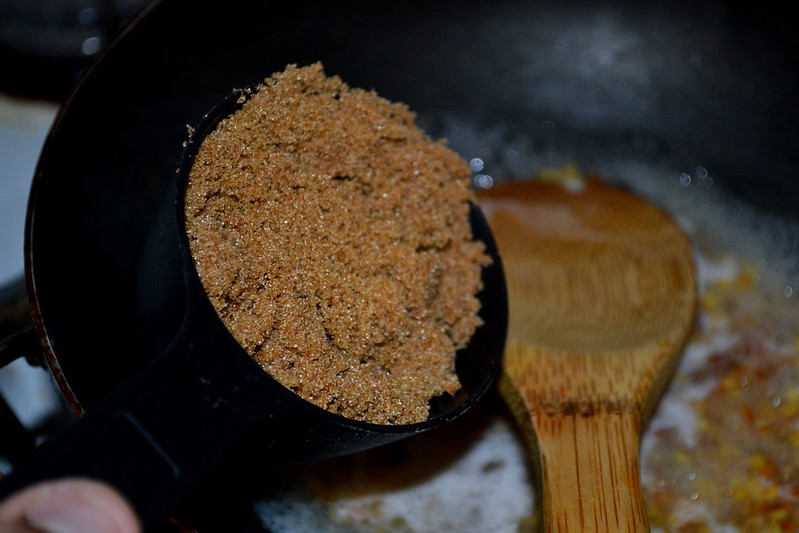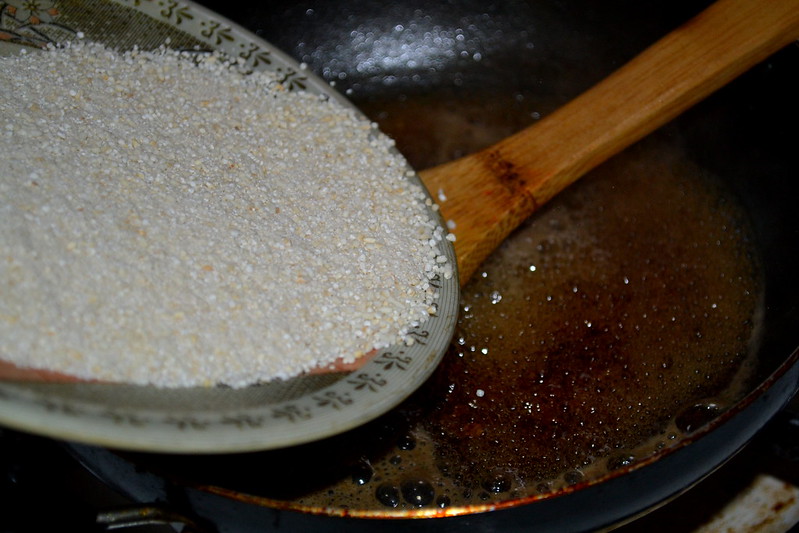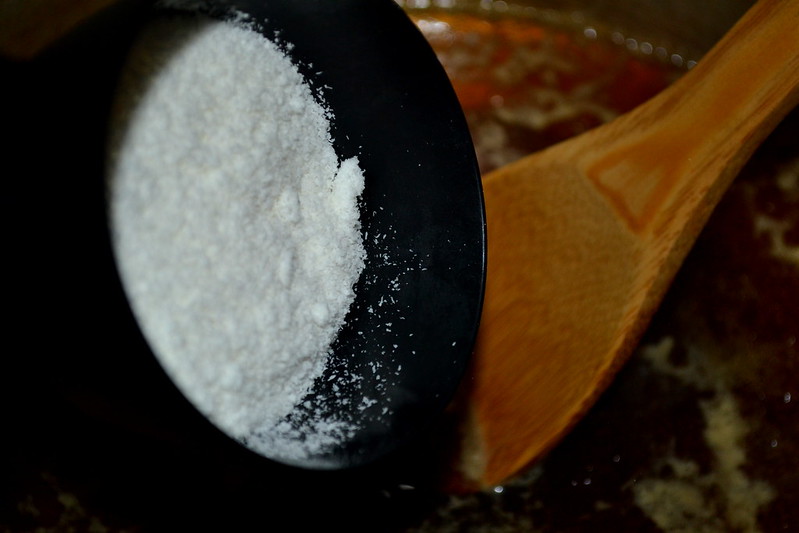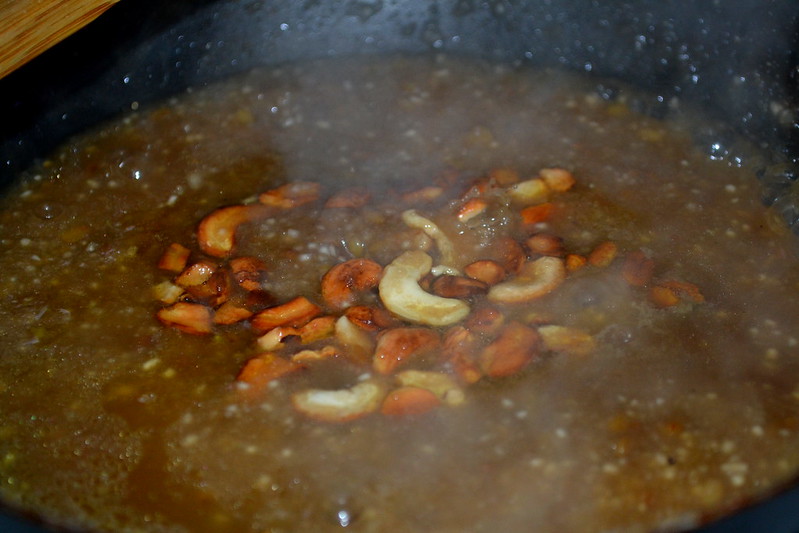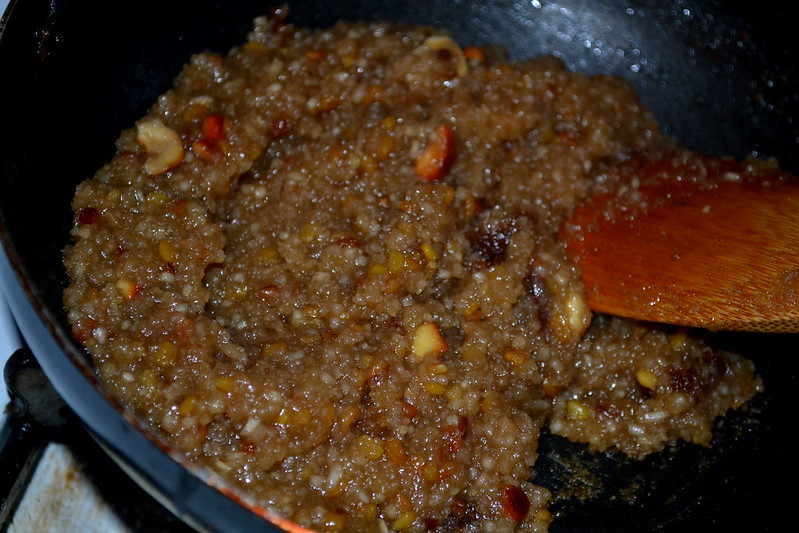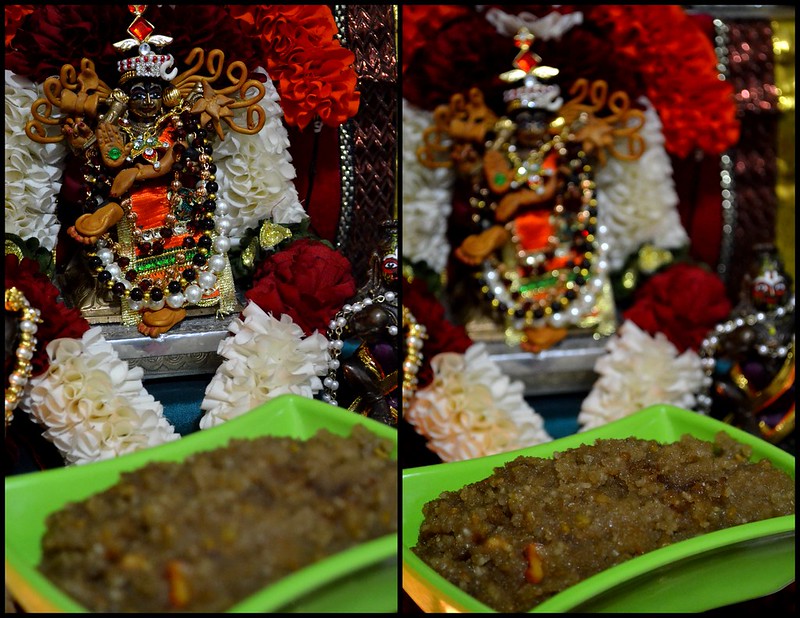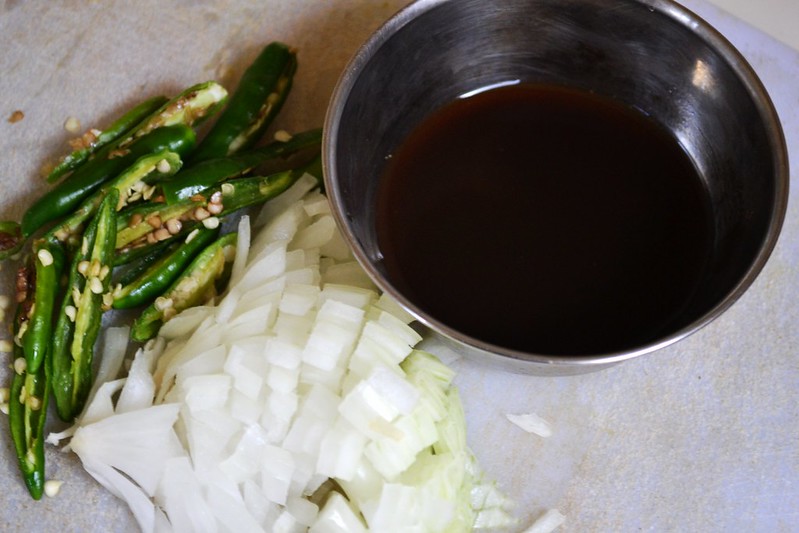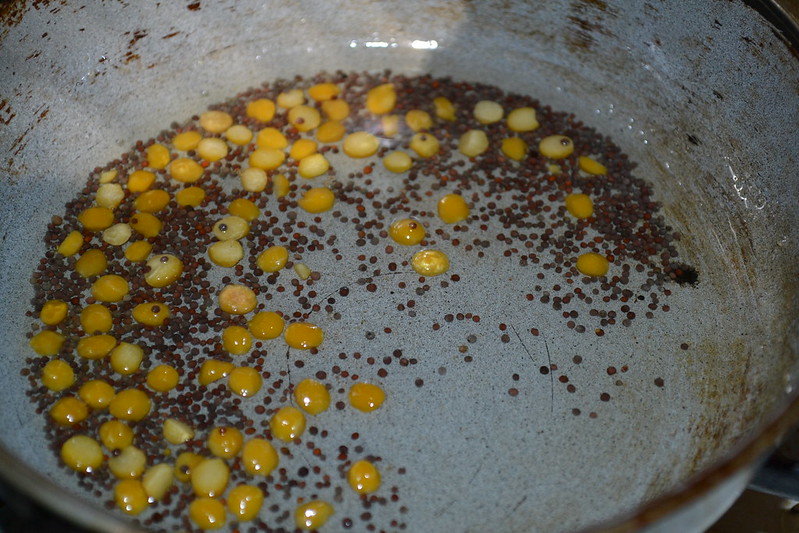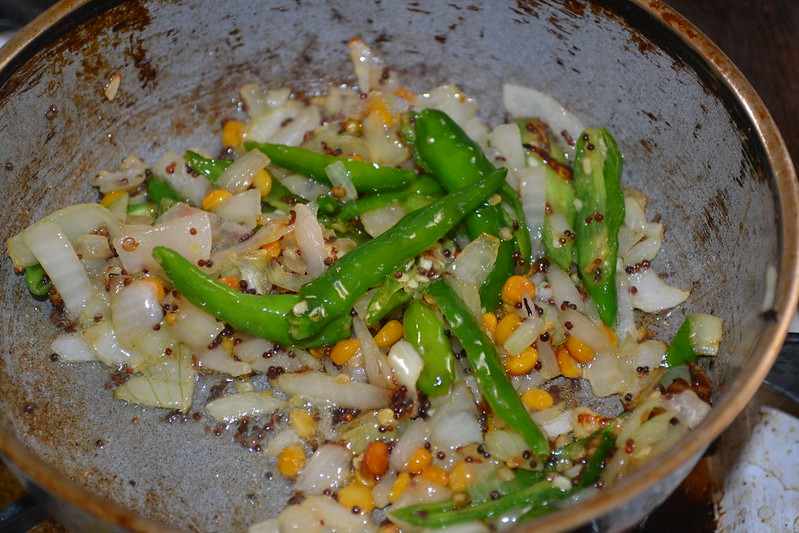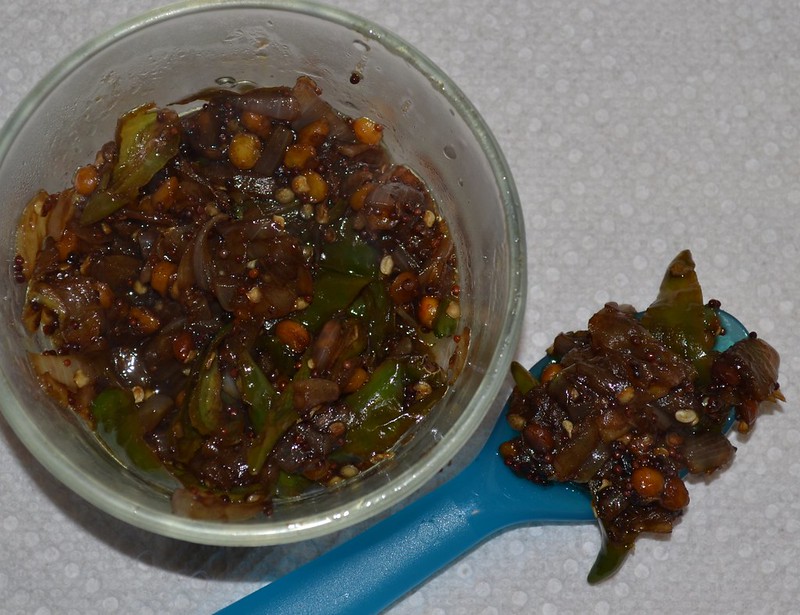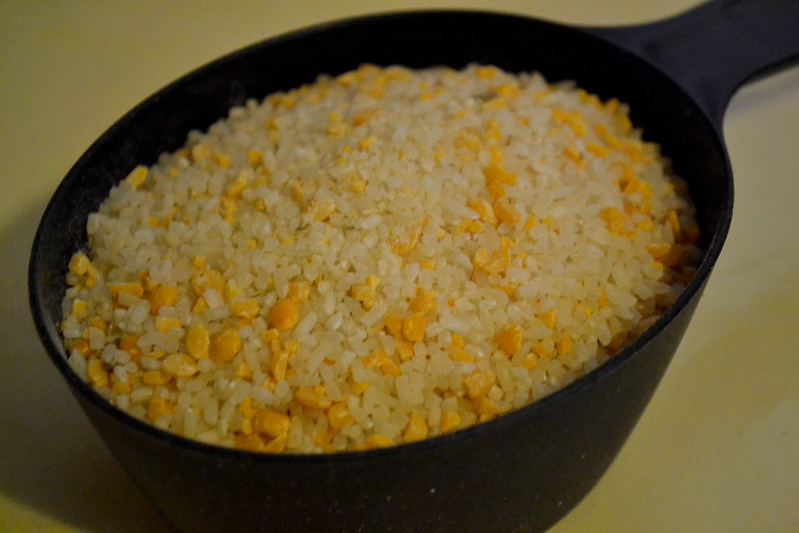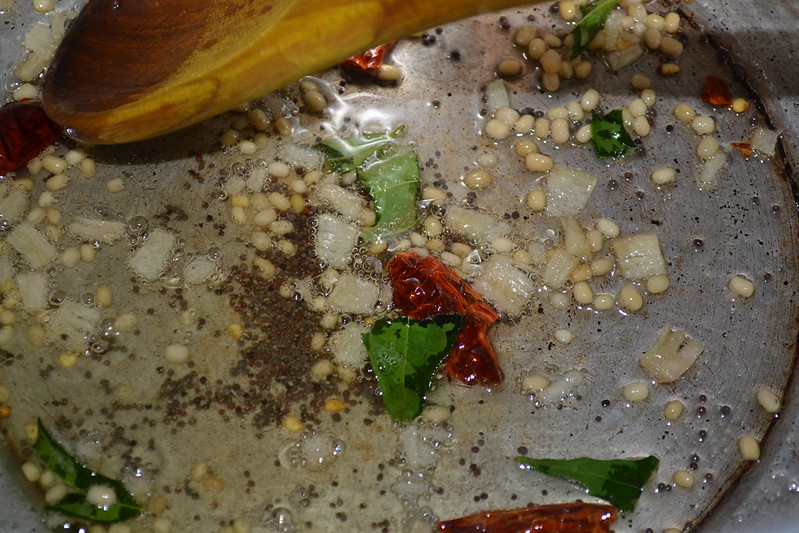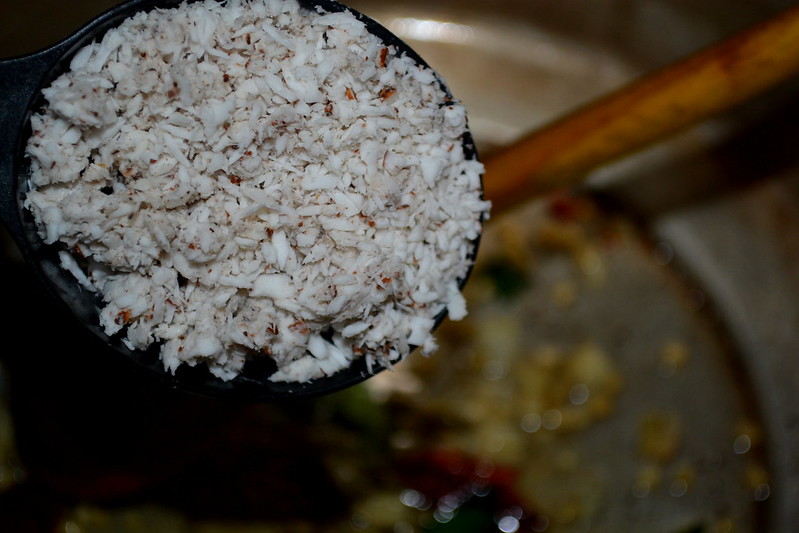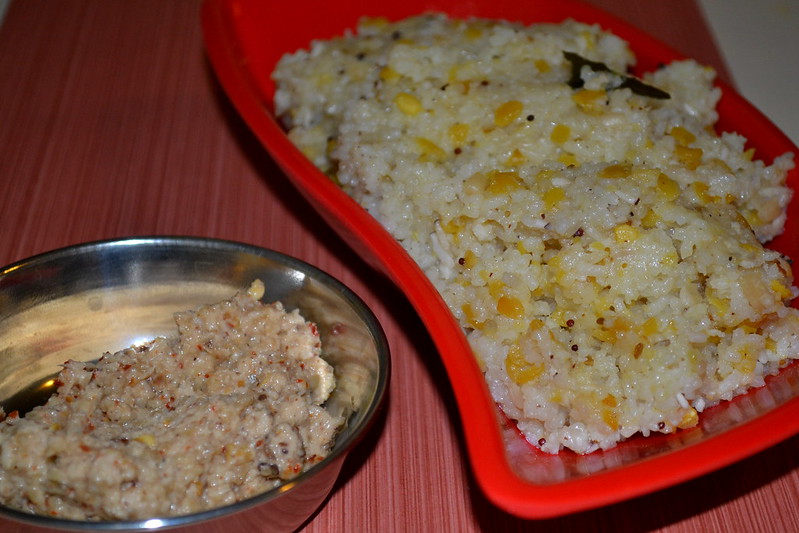Today is Thiruvadhirai - a day of special celebration, worship, and feasting at all Shaivite shrines in South India; and Tamil Nadu in particular. Even though the asterism of Thiruvadhirai occurs once in every 27 days, its occurrence during the Tamil month of Maargazhi (Mid-December to Mid-January) is observed with much grandeur. It is said to be the day when Shiva answered the prayers of the saints Vyagrapaada and Patanjali, and blessed them with a vision of His cosmic dance. The grandest of these celebrations are observed at the Shrine of Chidambaram where Shiva appears as Nataraja (AKA Nutty), the Lord of Dance, housed in a hall roofed with golden tiles. The festivities begin at 2 in the early morning when the murti (idon/idol) of Nataraja (Yes, the same bronze masterpiece whose replicas are seen worldwide from the CERN campus to the humblest of homes) is bathed in fragrant powders, followed by a procession around the temple to the tune of several instruments. Several hours after being woken up at an unearthly 2AM, He is finally offered a large cauldron of something that looks like mashed Sakkarai Pongal. This is the famed Kali, that is offered just once a year to Nataraja, and like all off-the-beat temple offerings, has its own small tale.
Chendanaar was a poor but pious inhabitant of the hallowed town of Chidambaram. Like all devout Shaivas of yore, he had inculcated a practice of partaking his mid-day meal only after sharing a portion of it with another Sivanadiyaar (One who offers himself to Shiva). One year, on the day preceding Thiruvadhirai, severe rains had driven people indoors. As a result, Chendanaar's wife had no opportunity to collect the necessary resources for the meal. So, when a Sivanadiyaar showed up at their doorstep in the pouring rain, they had no choice but to serve him a quick, frugal meal of rice flour cooked in jaggery syrup. Greatly saddened by their assumed inhospitality, the couple turned up early at the shrine on the day of Thiruvadhirai. When the priest finally opened up the sanctum for worship, Nataraja stood there, dancing in bliss as always, but with a smattering of Chendanaar's Rice-Jaggery paste across His lips, while scattered Kali lay all over the floor. Chendanaar's eyes welled up at the revelation of his guest being Shiva Himself, while his wife related the incident to others amidst supressed sobs of humility, wonder, and satisfaction. Ever since, the humble Kali has become a staple offering for Nataraja not only at Chidambaram, but also at everyone's homes on Thiruvadhirai. The touching tale brings to one's mind Krishna's words in the Gita :
patram pushpam phalam tOyam, yO mE bhaktyA prayacchatI
tad aham baktyupAhrtam ashnAmi payatyAtmanah.
"If a person offers to me with love and devotion, even a leaf, a flower, a fruit or water
I accept wholeheartedly, that offering made by the pure-hearted being"
It is not the offering that is so important as the spirit in which it is made. With that small thought in mind, lets dive into the recipe.
THIRUVADHIRAI KALI (Serves 2)
Set-up Time : 10 minutes
Set-up Time : 10 minutes
Experiment Run-Time : 25 minutes
The Shopping List
Set 1: For the Kali
Raw Rice : 1/3 Cup
Moong Dal (Dehusked Green Gram) : 1 Tbsp
Jaggery/ Brown Sugar : 1/2 Cup, powdered
Grated Coconut : 1/3 Cup
Raw Rice : 1/3 Cup
Moong Dal (Dehusked Green Gram) : 1 Tbsp
Jaggery/ Brown Sugar : 1/2 Cup, powdered
Grated Coconut : 1/3 Cup
Set 2: For the Drool Factor
Cashew-nuts : about 6, broken
Cardamom Powder : 1 tsp
Ghee : 2 Tbsp
1. In a wide pan, fry the rice on a medium flame until it gives off a nutty aroma and turns a delicate shade of brown. Please, let it be a delicate shade of brown and not the much coveted chocolate brown!
2. Cool it sufficiently (which I always lack the patience to do) and grind it a coarse powder in a blender. A few pulses are usually enough!
3. In the same pan, fry the Moong Dal until it too starts acquiring a golden-brown hue. Pour in a cup of cold water and watch the Dals dance merrily as it comes to a boil.
4. Check the Dal in about 10 minutes. It should almost be there. If you tried to squash one between your thumb and forefinger it should give in but with a little resistance.
5. Once convinced about the consistency of the Dal, add the powdered Jaggery (Or brown sugars, as I sometimes tend to substitute) into the pan with about 2 cups of water. Let it come to a boil on medium flame
(If you live within the subcontinent, it would be worth to dissolve the Jaggery in some warm water, filter it, and then proceed with the solution at hand)
6. When the Jaggery syrup starts to boil, tip in the powdered rice and start to stir until the rice particles are mixed well into the syrup.
7. Add a tablespoon of ghee and some cardamom powder and watch them get absorbed by the now spluttering mass.
8. Finally, add the grated coconut and incorporate it into the Kali.
9. In a separate pan, heat the rest of the ghee and fry the cashew-nuts to a golden shade.
10. When the nuts are done, add them to the spluttering Kali, ghee and all.
11. When the paste starts to leave the sides of the pan, it is done. Scoop it all up into a bowl and proceed with either your worship or your devouring!
Traditionally, the Kali is accompanied by an Ezhu-Kari Kootu, a yummy Sambhar like medley of seven vegetables. But, Hello! Where am I to go for Avarakkai, Yam, Colocasia, Mochai and the rest of the veggies in the middle of an Ohio winter? So the Nataraja at my home got served only the Kali sans the Kootu. It saddens me a little, but then again, let us all remember Krishna's words in the Gita and make up for the lack of Ezhu-Kari with a little more sincerity, devotion and love!
2. Cool it sufficiently (which I always lack the patience to do) and grind it a coarse powder in a blender. A few pulses are usually enough!
3. In the same pan, fry the Moong Dal until it too starts acquiring a golden-brown hue. Pour in a cup of cold water and watch the Dals dance merrily as it comes to a boil.
4. Check the Dal in about 10 minutes. It should almost be there. If you tried to squash one between your thumb and forefinger it should give in but with a little resistance.
5. Once convinced about the consistency of the Dal, add the powdered Jaggery (Or brown sugars, as I sometimes tend to substitute) into the pan with about 2 cups of water. Let it come to a boil on medium flame
(If you live within the subcontinent, it would be worth to dissolve the Jaggery in some warm water, filter it, and then proceed with the solution at hand)
6. When the Jaggery syrup starts to boil, tip in the powdered rice and start to stir until the rice particles are mixed well into the syrup.
8. Finally, add the grated coconut and incorporate it into the Kali.
9. In a separate pan, heat the rest of the ghee and fry the cashew-nuts to a golden shade.
10. When the nuts are done, add them to the spluttering Kali, ghee and all.
11. When the paste starts to leave the sides of the pan, it is done. Scoop it all up into a bowl and proceed with either your worship or your devouring!
Traditionally, the Kali is accompanied by an Ezhu-Kari Kootu, a yummy Sambhar like medley of seven vegetables. But, Hello! Where am I to go for Avarakkai, Yam, Colocasia, Mochai and the rest of the veggies in the middle of an Ohio winter? So the Nataraja at my home got served only the Kali sans the Kootu. It saddens me a little, but then again, let us all remember Krishna's words in the Gita and make up for the lack of Ezhu-Kari with a little more sincerity, devotion and love!






